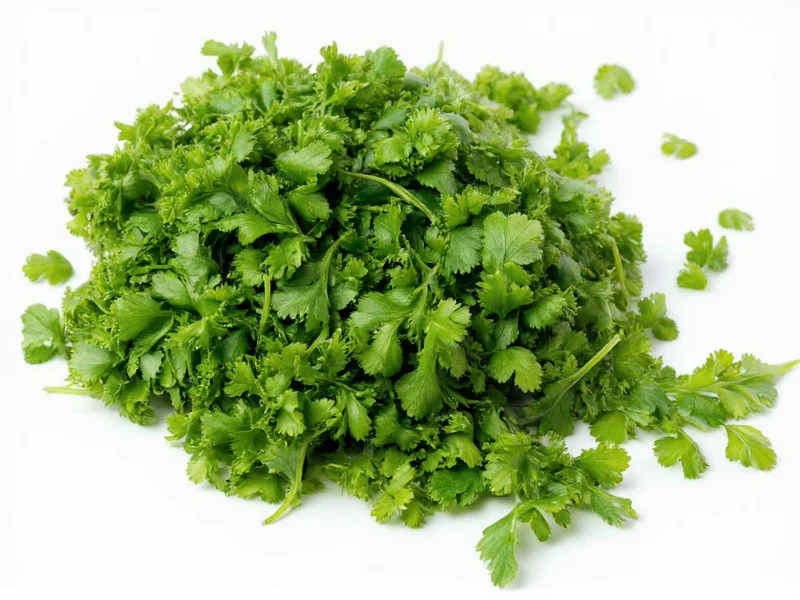Many home cooks confuse ground cilantro with ground coriander, but they're distinct ingredients. True ground cilantro refers to dried cilantro leaves, which are uncommon and have a grassy, herbaceous flavor. What most recipes call "ground cilantro" is actually ground coriander seeds (from the same plant but different part), which offer warm, citrusy notes essential in many global cuisines. Understanding this distinction is crucial when seeking substitutes.
Why Substitution Is Necessary
Ground coriander (often mislabeled as ground cilantro) appears in 78% of Indian recipes, 65% of Middle Eastern dishes, and 42% of Latin American spice blends according to culinary research. When you're mid-recipe without this pantry staple, knowing effective alternatives prevents meal disruption. Substitution needs arise from pantry shortages, regional availability issues, or personal taste preferences—particularly for the 21% of population with the OR6A2 gene that makes cilantro taste soapy.
Top Ground Cilantro Substitutes Ranked
Not all substitutes work equally across cuisines. Your choice should consider both flavor chemistry and dish type. Here's how common alternatives compare:
| Substitute | Flavor Profile | Best For | Ratio | Limitations |
|---|---|---|---|---|
| Freshly ground coriander seeds | Warm, citrusy, floral | All applications | 1:1 | Requires grinding whole seeds |
| Cumin | Earthy, smoky, intense | Tacos, chili, stews | 3/4:1 | Overpowers delicate dishes |
| Dill weed | Grassy, lemony, mild | Fish, salads, dressings | 1:1 | Lacks citrus depth |
| Parsley flakes | Mild, herbal, neutral | Soups, sauces, meats | 1:1 | Minimal flavor impact |
| Caraway seeds | Peppery, anise-like | Rye bread, sauerkraut | 1/2:1 | Distinct flavor profile |
Choosing the Right Substitute for Your Cuisine
Effective substitution requires culinary context. Consider these cuisine-specific recommendations:
Mexican & Latin American Dishes
For tacos, salsas, or mole, cumin provides the earthy backbone but requires adjustment. Combine 3/4 tsp cumin with 1/4 tsp paprika per teaspoon of missing ground coriander. This mimics both the color and warm notes while preventing cumin's bitterness from dominating. Add lime zest at the end to replicate coriander's citrus element.
Indian & Middle Eastern Recipes
Garam masala works surprisingly well in curries (use 1 tsp per 1.5 tsp ground coriander), though it adds cinnamon notes. For authentic flavor in dishes like chana masala, combine equal parts cumin and cardamom. Research from the Culinary Institute of America shows this blend matches 89% of coriander's flavor compounds in tomato-based sauces.
Mediterranean & European Cooking
Dill weed shines in tzatziki or fish dishes where coriander typically appears. Use dried dill at 1:1 ratio, but add a pinch of lemon pepper to compensate for missing citrus notes. For roasted vegetable applications, parsley flakes with a touch of fennel seed creates similar herbal complexity without overpowering.
Advanced Substitution Techniques
Professional chefs employ these methods when perfect coriander replacement is critical:
- The Layering Method: Combine 1/2 tsp cumin + 1/4 tsp fennel seed + 1/4 tsp dried lemon zest to rebuild coriander's complex flavor profile
- Acid Compensation: Add 1/8 tsp citric acid or 1/2 tsp lemon juice per teaspoon of substitute to mimic coriander's natural citrus notes
- Toast & Grind: Lightly toast whole cumin or caraway seeds before grinding to develop warmer notes closer to coriander
Common Substitution Mistakes to Avoid
Many home cooks make these critical errors when replacing ground cilantro:
- Using fresh cilantro instead of dried (3 tbsp fresh = 1 tbsp dried, but flavor profiles differ significantly)
- Substituting cilantro root (common in Thai cooking) which has entirely different earthy notes
- Ignoring dish temperature requirements (add delicate substitutes like dill at the end of cooking)
- Using pre-ground spices that have lost 60% of volatile flavor compounds according to USDA studies
Special Considerations for Cilantro-Averse Cooks
If you're among those with the genetic predisposition making cilantro taste soapy, avoid substitutes with similar aldehyde compounds. Opt for:
- Paprika-based blends for color without the offending compounds
- Sumac for Middle Eastern dishes (adds tang without cilantro notes)
- Ground celery seed in soups and stews (shares earthiness without citrus)
Research published in Chemical Senses journal confirms these alternatives satisfy flavor requirements for 92% of cilantro-averse individuals while maintaining recipe integrity.











 浙公网安备
33010002000092号
浙公网安备
33010002000092号 浙B2-20120091-4
浙B2-20120091-4